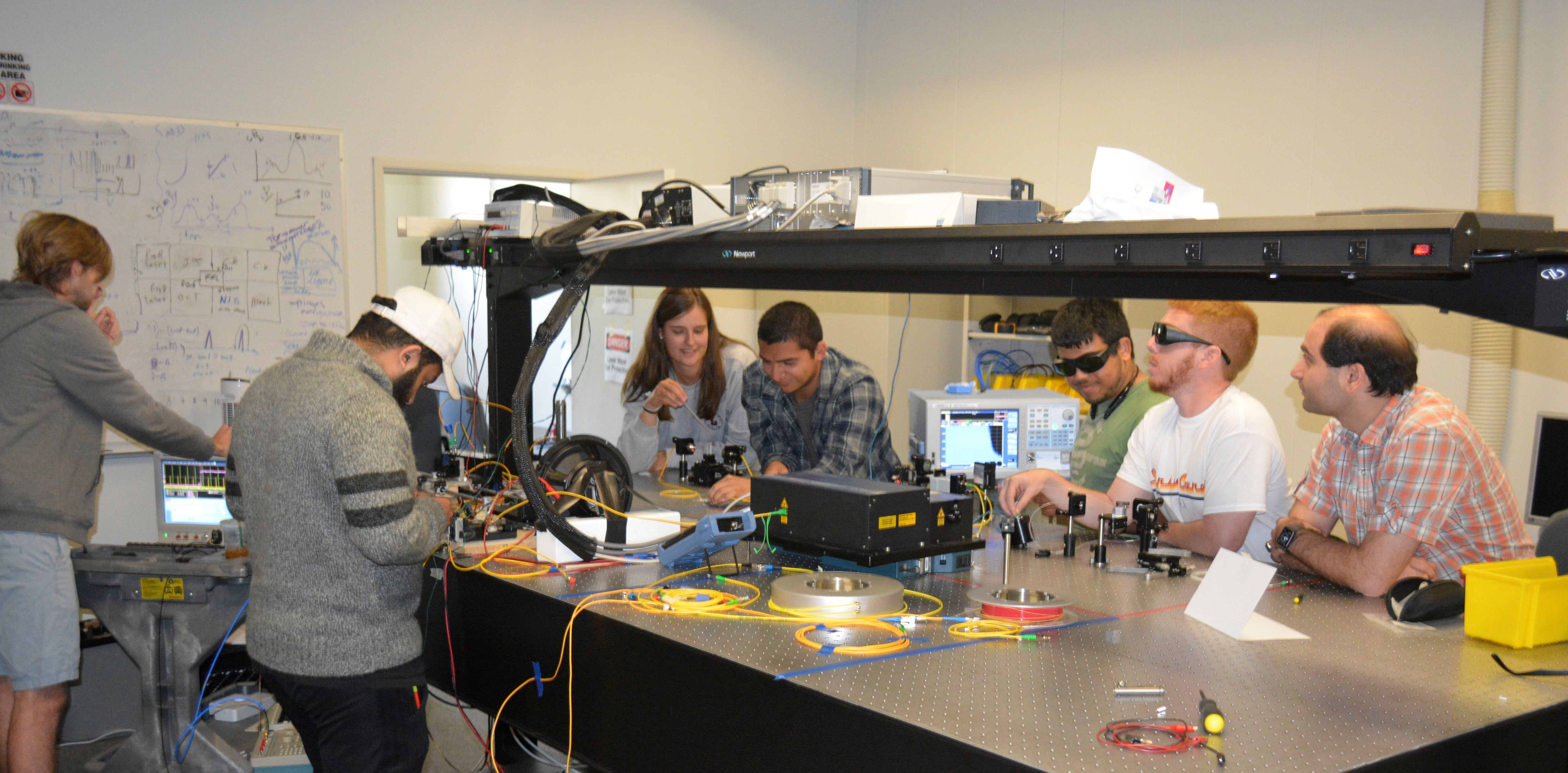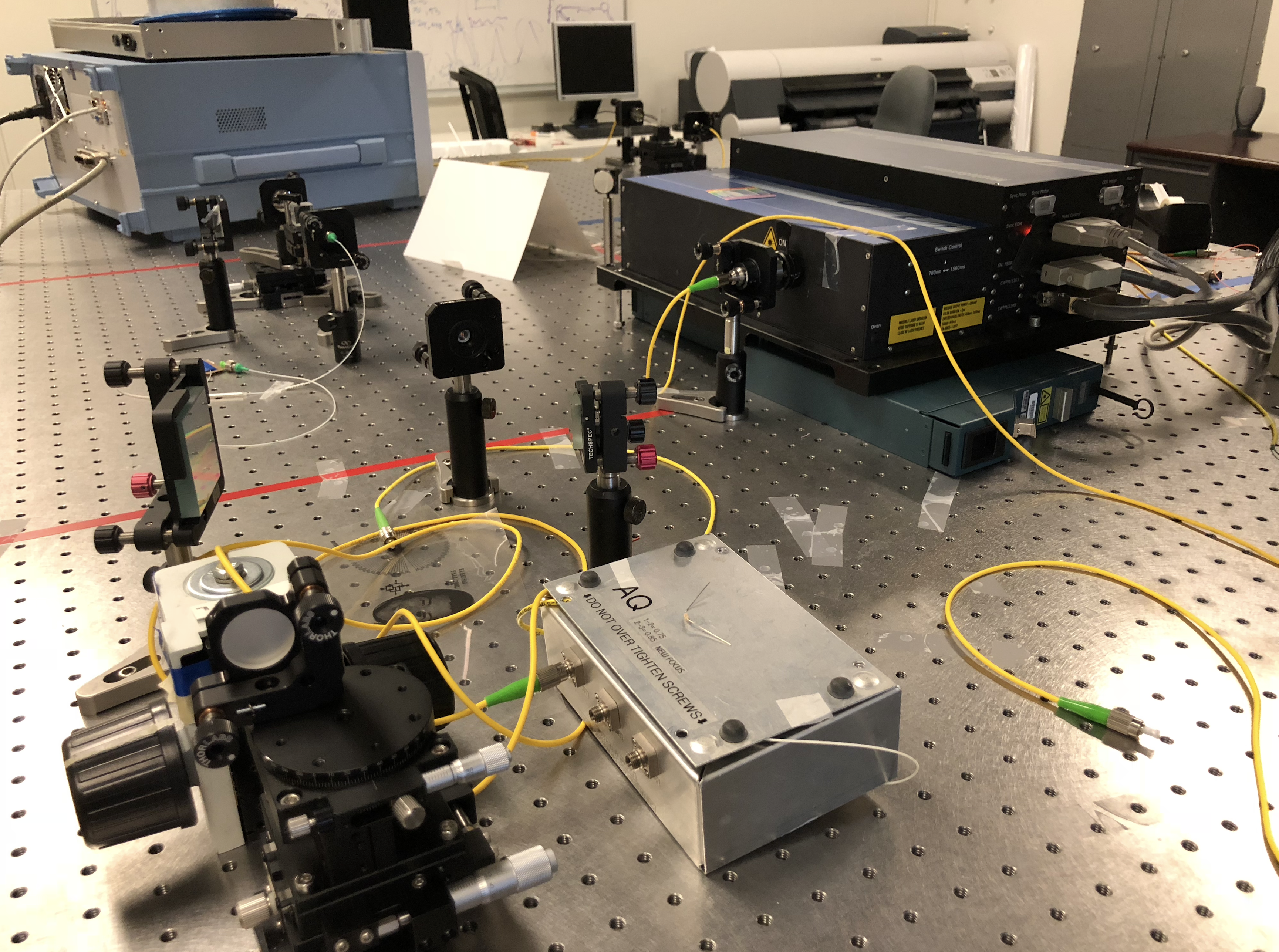
Ultrafast detection, a technique that uses light to detect extremely fast phenomena, is the main research interest at the Photonics Lab, which is directed by Dr. Hossein Asghari. This technology has applications in medicine, telecommunications and aerospace/defense. For example, it can quickly sort through millions of cells in human blood to find the few that might be cancerous, greatly enhance the speed of a slow oscilloscope so it can capture much faster events, and capture the vibrations of objects moving as fast as million miles per hour.

He has already commercialized this technology to make it more accessible for other researchers in industry and academia. Students across disciplines can bring ideas for projects in ultrafast detection to his lab and publish papers in high-impact international journals and conferences. Other applications of interest include real-time optical signal characterization and wideband data conversion.
Recent Publications
M. Bukhalaf, E. Issakhanian, and H. Asghari, “Measuring Ultrafast Turbulent Flow Characteristics using Time-Stretch Imaging,” URSI–2019 AP-RASC,New Delhi, India, published on IEEE Xplore, DOI: 10.23919/URSIAP-RASC.2019.8738608, 2019.
M. Hushahn, and H. Asghari, “Multi-probe time-stretch optical coherence tomography,” URSI–2020 GASS, Rome, Italy, 2021.
M. Suzuki, O. Boyraz, H. Asghari, P. Trinh, H. Kuroda, and B. Jalali, "Periodical Spectrum Elasticity of Soliton Explosions in a Broadband Mode-locked Yb Fiber Laser Using Time Stretch Spectroscopy," Optics Letters.
M. Suthar, H. Asghari and B. Jalali, "Feature Enhancement in Visually Impaired Images," IEEE Access.
M. Li, S. Sun, B. Li, H. Asghari, Y. Deng, W. Li and N. Zhu, "Time-bandwidth Compression of Microwave Signals," Optics Express. *This work was a collaboration between LMU and Chinese Academy of Science